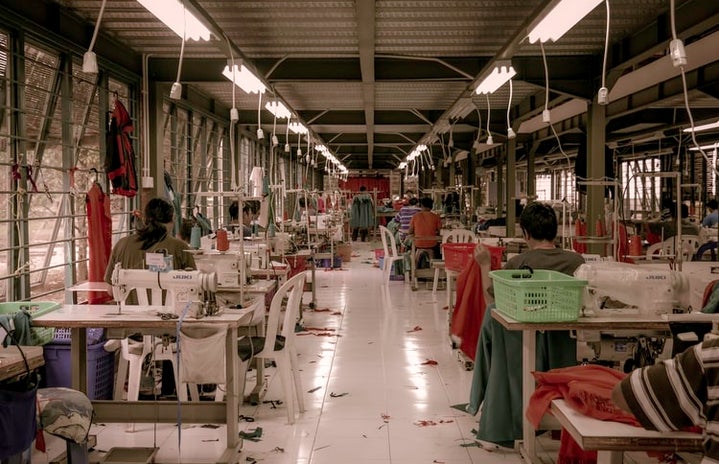As much as we all love the satisfying moment of pressing “checkout” on a couple-hundred dollar haul of new clothes and accessories, many of us fail to realize that the price tag goes way beyond what is listed on the tag. Most of the trendiest stores and online brands that we know and love are classified as what is known as “fast fashion.” This phrase is constantly thrown around the media surrounding the latest fashion trends and accessories, but how are we direct contributors to this ongoing issue?
Fast fashion brands such as H&M, Zara, Forever 21, Urban Outfitters and the infamous but beloved, Shein all use data and research to collect information on the latest trends and viral clothing items. With this in-depth knowledge, these brands are able to process a quick turnaround of new items that are right on trend within just a few weeks. Shein has intensified this ability for a fast turnaround by making this turnaround only five to seven days, allowing them to continually introduce the most trendy items on the market gaining them a revenue of $10 billion in 2020. The problem with their business model lies in the implications that manufacturing a plethora of cheaply made clothes designed purposefully to not last. These clothes made of primarily nylon and polyester are destined to sit in landfills for decades or even centuries. With the seemingly successful business model of releasing hundreds of new trendy clothing styles a day, Shein has single-handedly increased the global issue of clothing waste.
About 85 percent of clothing waste reaches landfills in the US (and there are tons of it) creating a mass of clothing that will never decay. Aside from clothes that are thrown away by consumers, some fast fashion brands such as H&M incinerate clothes that are unsold stock rather than donating to those in need or even working with secondary retailers to sell unused merchandise. This practice deposits tons of unneeded carbon emissions into the Earth’s atmosphere. Not only does the fashion industry create more greenhouse gas emissions than international flights and maritime shipping combined, but the fashion industry also uses enough water to meet the consumption needs of 5 million people. By buying new clothes every two weeks and disposing of our earlier buys, we are actively contributing to the ongoing global warming crisis that faces our planet. At the rate we’re going, the global consumption of apparel will rise from 62 million metric tons in 2019 to 102 million tons in 10 years.
As a society and as socially conscious individuals, we have a responsibility to be thoughtful with the decisions we make regarding where we source our wardrobes and how our decisions affect the environment. Even though more sustainable clothing pieces may not be as trendy, there are definitely ways to put together outfits that will coincide with any of the latest fashion. Besides, thrifting is the latest and trendiest way to get cute clothes anyways! It’s time we say bye to Shein and hello to our local thrift stores!
Want to see more HCFSU? Be sure to like us on Facebook and follow us on Instagram, Twitter, TikTok, YouTube and Pinterest!


